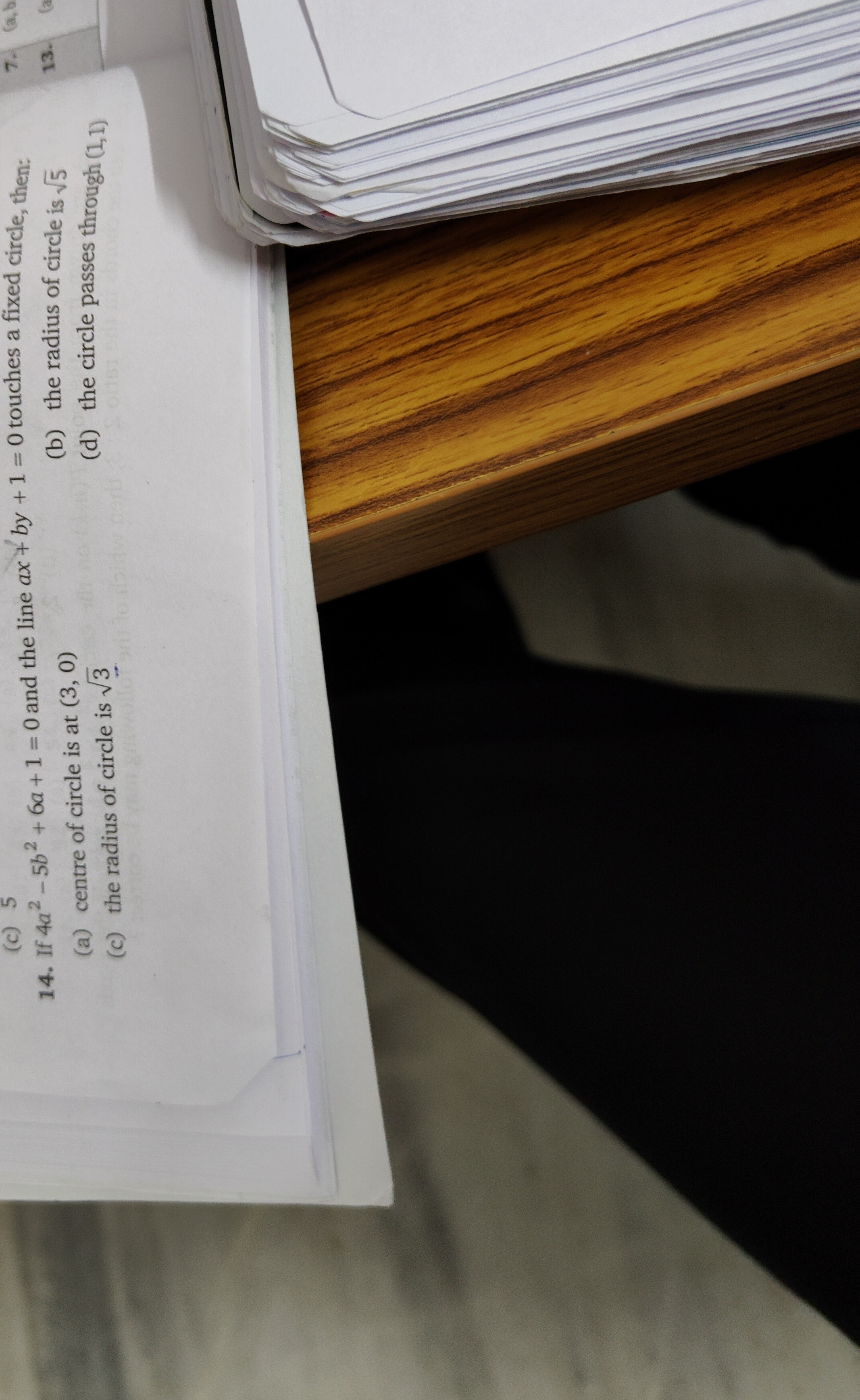Question
Question: If $4a^2 -5b^2 + 6a + 1 = 0$ and the line $ax + by + 1 = 0$ touches a fixed circle, then:...
If 4a2−5b2+6a+1=0 and the line ax+by+1=0 touches a fixed circle, then:

centre of circle is at (3, 0)
the radius of circle is 5
the radius of circle is 3
the circle passes through (1, 1)
(a), (b), (d)
Solution
The condition for the line ax+by+1=0 to touch a circle with center (h,k) and radius r is given by the perpendicular distance from the center to the line being equal to the radius: a2+b2∣ah+bk+1∣=r Squaring both sides, we get: (ah+bk+1)2=r2(a2+b2) This equation must hold for all a,b satisfying the constraint 4a2−5b2+6a+1=0.
Let's test option (a): center is at (3,0), so h=3 and k=0. Substituting these values into the touching condition: (3a+0b+1)2=r2(a2+b2) (3a+1)2=r2(a2+b2) 9a2+6a+1=r2a2+r2b2 From the constraint 4a2−5b2+6a+1=0, we can express b2 in terms of a: 5b2=4a2+6a+1⟹b2=54a2+6a+1 Substitute this expression for b2 into the equation from the touching condition: 9a2+6a+1=r2a2+r2(54a2+6a+1) Multiply by 5 to clear the fraction: 5(9a2+6a+1)=5r2a2+r2(4a2+6a+1) 45a2+30a+5=5r2a2+4r2a2+6r2a+r2 45a2+30a+5=(9r2)a2+(6r2)a+r2 For this equation to hold for all valid values of a, the coefficients of the corresponding powers of a on both sides must be equal. Comparing coefficients of a2: 45=9r2⟹r2=5. Comparing coefficients of a: 30=6r2⟹r2=5. Comparing constant terms: 5=r2. All comparisons consistently give r2=5. This means that if the center is (3,0), the radius must be 5.
This confirms option (a) is consistent with option (b). So, the fixed circle has center (3,0) and radius 5.
Now let's check option (d): the circle passes through (1,1). The equation of the circle with center (3,0) and radius 5 is (x−3)2+y2=(5)2, which simplifies to (x−3)2+y2=5. Let's substitute the point (1,1) into this equation: (1−3)2+(1)2=(−2)2+12=4+1=5 Since 5=5, the point (1,1) lies on the circle. Thus, option (d) is also correct.
Option (c) states the radius is 3, which means r2=3. This contradicts our finding that r2=5. So, option (c) is incorrect.
Therefore, the correct statements are (a), (b), and (d).
